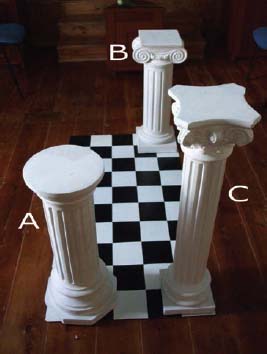Art of the Ancient World, C. 5000 B.c.e.–400 C.E.Ancient Greek Art |
What is the Ionic order? |
The Ionic order is the second of the three classical Greek Architectural Orders and is characterized by a longer, leaner column than the Doric order. Ionic columns were built with a ratio of approximately 9:1 and the capital at the top of the column is 46 shaped like an unfurling scroll, which is called a volute.
The Temple of Athena Nike, located on the Acropolis in Athens and built between 427 and 424 B.C.E., is an example of an Ionic temple. This small building was only about twenty-seven by nineteen feet and it was completely demolished by invading Turks during the seventeenth century, though it was later rebuilt. The temple is famous for its two porches on each end, and for a surviving fragment of relief sculpture known as Athena Nike Adjusting Her Sandal. This elegant image shows the goddess wearing a long, flowing robe which clings gently to her body as she bends to adjust her shoe. Her robe slips off of one shoulder and she appears momentarily vulnerable, a delicate and erotic image of the goddess.

The classical orders of Greek architecture include Doric (A), Ionic (B), and Corinthian (Q columns, which are increasingly tall and complex in their design.The system of classical orders was essential to ancient Greek building design; it was heavily copied by ancient Romans and remains popular today.
